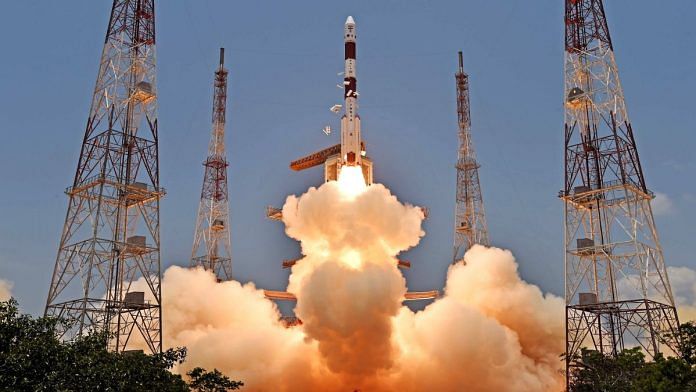New Delhi: India’s first solar mission Aditya-L1 took a selfie, and photos of the Earth and the Moon as it headed for its intended orbit to study the outer atmosphere of the Sun.
The Indian Space Research Organisation posted the photos taken on 4 September with the camera aboard Aditya-L1.
Aditya-L1 Mission:
👀Onlooker!
Aditya-L1,
destined for the Sun-Earth L1 point,
takes a selfie and
images of the Earth and the Moon.#AdityaL1 pic.twitter.com/54KxrfYSwy
— ISRO (@isro) September 7, 2023
Aditya-L1 blasted off from spaceport Sriharikota on 2 September and will reach the orbit of Lagrange Point (L1) by January. This is around 1.5 million kilometres from Earth – which is 1% of the Earth-Sun distance. The spacecraft will have an unhindered view of the Sun from this orbit and will stay put there for several years.
The take-off came barely a week after India landed a spacecraft on the lunar south pole – becoming the first country to reach that area, and only the fourth to touch the Moon.
Aditya-L1, which was launched by the rocket PSLV-C57, carries seven indigenous payloads or special instruments – four of which will observe the light from the sun and the other three will measure in-situ parameters of the plasma and magnetic fields.
The main science objective of the mission is to observe the solar atmosphere, mainly the corona and the chromosphere – the first and second layers making up the Sun’s outer atmosphere. It has a third layer called the photosphere.
The spacecraft’s payloads will study the solar upper atmospheric dynamics, chromospheric and coronal heating, physics of the partially ionised plasma, initiation of the coronal mass ejections, and flares.
It will also observe the in-situ particle and plasma environment, providing data for the study of particle dynamics from the Sun, physics of solar corona and its heating mechanism, as well as drivers for space weather, among other things.
As soon as Aditya-L1 was successfully put in a low-Earth orbit after take-off, Prime Minister Narendra Modi said the country’s “tireless scientific efforts” would continue in order to “develop better understanding of the Universe for the welfare of entire humanity”.
Coming up next is a three-day crewed mission into the Earth’s orbit by 2024.
Also read: India’s ‘sunshine moment’ — ISRO successfully launches Aditya-L1, its first solar mission



